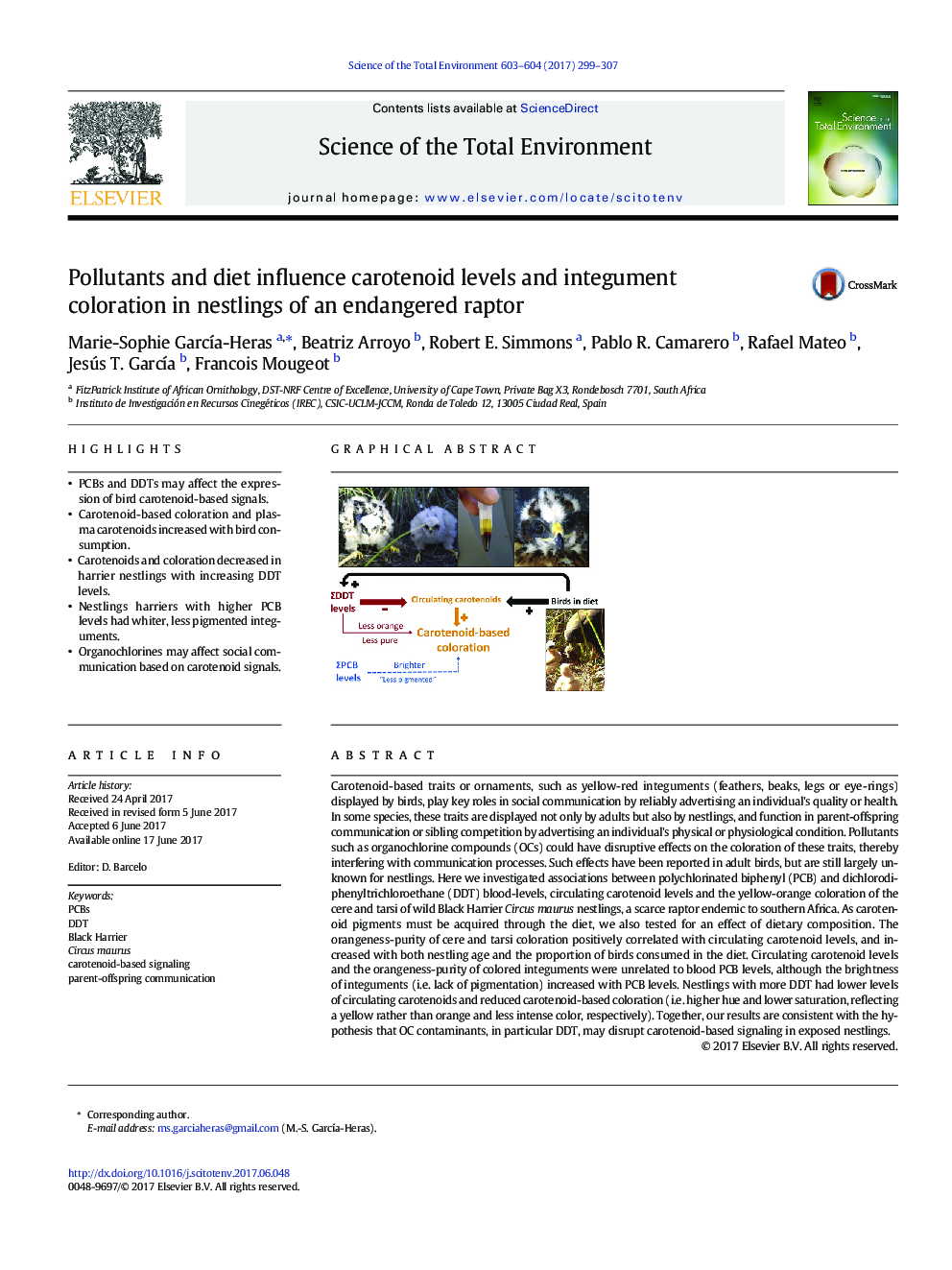| کد مقاله | کد نشریه | سال انتشار | مقاله انگلیسی | نسخه تمام متن |
|---|---|---|---|---|
| 5750300 | 1619696 | 2017 | 9 صفحه PDF | دانلود رایگان |
- PCBs and DDTs may affect the expression of bird carotenoid-based signals.
- Carotenoid-based coloration and plasma carotenoids increased with bird consumption.
- Carotenoids and coloration decreased in harrier nestlings with increasing DDT levels.
- Nestlings harriers with higher PCB levels had whiter, less pigmented integuments.
- Organochlorines may affect social communication based on carotenoid signals.
Carotenoid-based traits or ornaments, such as yellow-red integuments (feathers, beaks, legs or eye-rings) displayed by birds, play key roles in social communication by reliably advertising an individual's quality or health. In some species, these traits are displayed not only by adults but also by nestlings, and function in parent-offspring communication or sibling competition by advertising an individual's physical or physiological condition. Pollutants such as organochlorine compounds (OCs) could have disruptive effects on the coloration of these traits, thereby interfering with communication processes. Such effects have been reported in adult birds, but are still largely unknown for nestlings. Here we investigated associations between polychlorinated biphenyl (PCB) and dichlorodiphenyltrichloroethane (DDT) blood-levels, circulating carotenoid levels and the yellow-orange coloration of the cere and tarsi of wild Black Harrier Circus maurus nestlings, a scarce raptor endemic to southern Africa. As carotenoid pigments must be acquired through the diet, we also tested for an effect of dietary composition. The orangeness-purity of cere and tarsi coloration positively correlated with circulating carotenoid levels, and increased with both nestling age and the proportion of birds consumed in the diet. Circulating carotenoid levels and the orangeness-purity of colored integuments were unrelated to blood PCB levels, although the brightness of integuments (i.e. lack of pigmentation) increased with PCB levels. Nestlings with more DDT had lower levels of circulating carotenoids and reduced carotenoid-based coloration (i.e. higher hue and lower saturation, reflecting a yellow rather than orange and less intense color, respectively). Together, our results are consistent with the hypothesis that OC contaminants, in particular DDT, may disrupt carotenoid-based signaling in exposed nestlings.
256
Journal: Science of The Total Environment - Volumes 603â604, 15 December 2017, Pages 299-307
